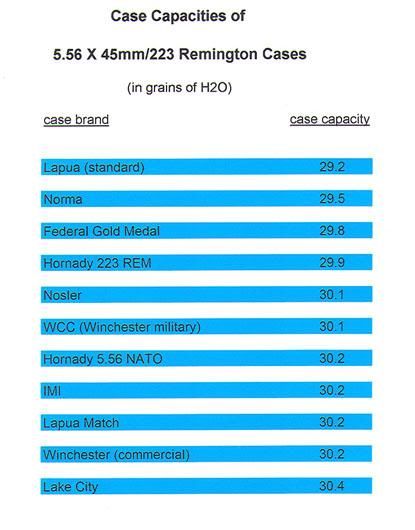Originally Posted By: 204farrhow many of you guys reload and mess with col it the same thing by the way when you cram the land it brings you up 7,200 psi . now 55,000 psi for a sammi 223 rem + 7,200psi for craming the lands = 62,200
and 5.56 sammi is 62,366 psi
its 166 psi diference
now if you start with 62,366 psi or a 5.56 sammi and add 7,200psi for cramming= 69,566psi
IMO you should not run over 65000 psi
a 5.56 in a gun chamberd for 223 comes in at 4,566psi over max but all guns are diferent
by the way if you gun blew up running this combo it more than the ammo that did it every gun action and barrel has to be tested befor you can get the atf aprovel to 162,500psi
or 2.5 x 65,000 and yes they do test it .
you might see a primer go or a case split at 4,566 psi
by the way you brass is the same your barrel is the same and so is your action for eather caliber
"... befor you can get the atf aprove"
ATF does NOT approve anything - they are a tax compliance agency.
There is NO agency that approves or disapproves pressures in guns.
In current rifles, including the M16, AR-15 family, the barrel and action if far stronger than you can imagine - 99.9999999999% of the time, it is the brass case or primer that lets go.




